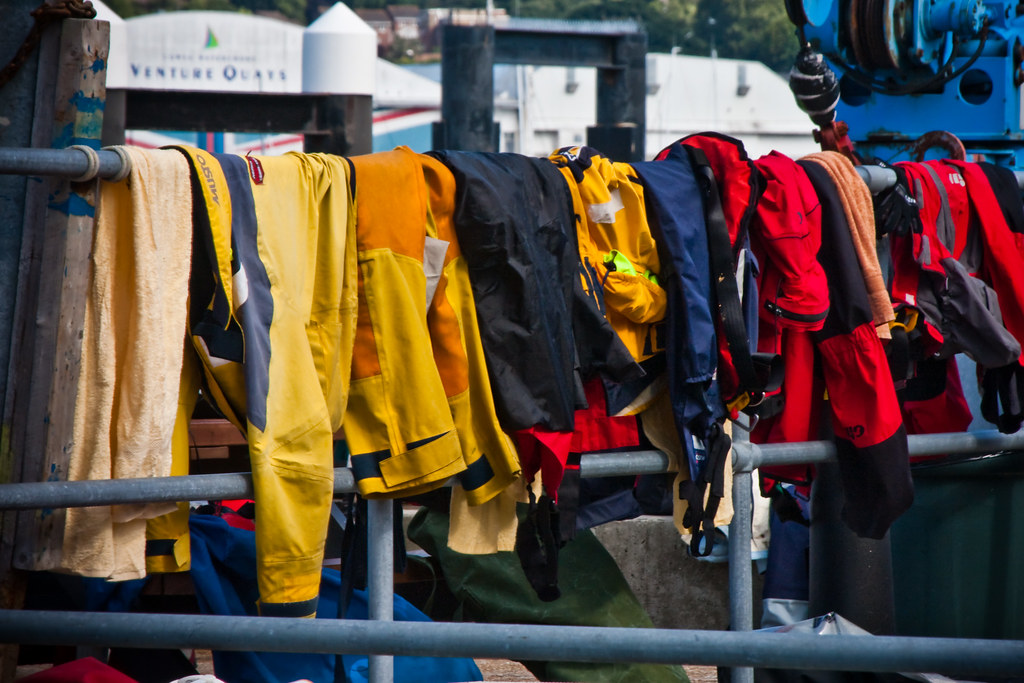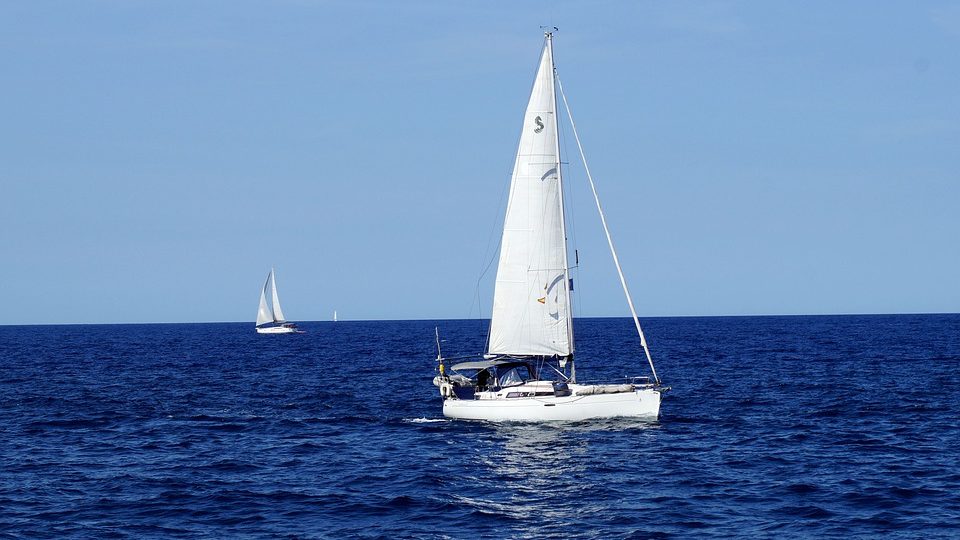Sailing Tips for Beginners
Are you new to sailing? Or an experienced sailor who’s looking to refresh its know-how? Then, continue reading this article that will give you some useful sailing tips for beginners. Sailing is an adventurous and enjoyable activity. Imagine steering your sailboat across the ocean, living on the sea, and sailing around the world. A lot of people that have tried sailing become somehow addicted. This is because they feel free, relaxed, and creative. If you are a beginner and haven’t tried yet, don’t hesitate! It might seem complicated in the first place, but I assure you that it’s not. Although it will take you years of sailing to turn you into an experienced sailor, you can learn the basics at no time and start sailing on calm waters.
Beginners Nautical Terms
Before you hit the water, make sure to get acquainted with some of the basic sailing terms that you’ll definitely need. Let’s see the most basic terms:
- Keel: The keel is located at the bottom of the sailboat in its middle. Its shape is like a heavy wing and forms the initial step on the construction of a sailboat.
- Rudder: The rudder directs the flow of the water and steers the boat. It is the wing located at the back of the bottom of the boat.
- Bow: The front of the sailboat.
- Stern: The back of the sailboat.
- Starboard: The right side of the sailboat.
- Port: The left side of the sailboat.
- Cockpit: The space in the stern that controls the sailboat.
- Jib Sail: The sail at the front of the sailboat.
- Boom: The boom is a horizontal spar situated along the bottom of a sail. In order to move the sailboat, the boom has to be adjusted to the direction of the wind.
- Windward: This term indicates the direction in which the wind is blowing.
- Leeward: The opposite direction to the current wind.
- Jibing: This is about turning the sailboat directly into the wind. The maneuver comprises of moving the sailboat’s stern through the wind, thus changing the direction of the wind from one side of the boat to the other.
- Tacking: This is the opposite of jibing. An essential maneuver of turning the bow into the wind, which alters the direction from which the wind blows from one side of the boat to the other.
Take Sailing Courses
When we start a new activity, it is always better to have some guidance at the beginning. If you start sailing by yourself, it can be dangerous and might cost you more. You can certainly invest some time learning the basics on the Web or from books, but practical instruction should come from an experienced sailor.
Prefer to Buy or Charter a Small Sailboat
It’s the same thing as with cars. You’re not going to take your first lesson by driving a bus! So, pick up a small sailboat, like with a dinghy or rigged with one sail. These types of sailboats are easier to maneuver and suitable for practicing capsizing. In this article, you can read all about the best sailboats for beginners.
Always Protect the Environment
When we sail on the sea, it is of great importance to acting responsibly. In order to do that you definitely have to avoid using plastic bags or any plastic packed products. Also, never throw at sea your cigarette butts, they also pollute the sea. Furthermore, the hygiene products you use onboard, put them in a plastic bag and wait until you’re ashore to dispose of them. As for the liquid, some of them like the detergents that we’re using onboard, among others, inevitably go into the sea. In any case, always think first before throwing something on the water. We sailors have to be responsible to take care of the sea and our Planet.
Start Sailing in Calm Waters and Check the Weather
Always practice in ideal weather conditions. This means light winds and within a low traffic area. For instance, you can practice in a marina that is definitely one of the safest options. Furthermore, make sure to check the weather forecast so that you can be prepared for different weather conditions (tide, wind, etc). Don’t forget to bring along enough provisions, such as lifejackets, a pharmacy box, food, and basic weather gear.
Provisions and Equipment
It’s important to learn basic navigation skills. You will need this in order to manage the boat safely from one place to another. All necessary safety-related equipment is essential i.e. flashlight, a fire extinguisher, whistle, flares, foghorn, a VHF radio, and a bilge pump. Remember to check or equip your sailboat with fenders, sufficient fuel, anchor and anchor rode (chain and line), and a tool kit. Furthermore, don’t forget to put on deck shoes, sunglasses, gloves, and a windbreaker. Last but not least, don’t forget to bring along enough provisions, such as lifejackets, a pharmacy box (plus a first aid kit), food, and basic weather gear.
Basic Water Traffic Rules
There are several well-known sailing areas that tend to get crowded when the weather and wind are in favor. So, remember these basic water traffic rules in order to prevent any possible accidents. The first rule is that in case you meet another sailboat, the boat which is on the starboard tack has the right of way over the boat on the port tack. On the other hand, the leeward boat has right of way over the windward boat. However, general sailing instructions indicate that sailboats should try to stay out of the way of large vessels and ferryboats. This is due to the fact that large vessels may find it harder to slow down or change direction, especially in narrow channels. To sum up, when you pass through a narrow channel, sailing instructions are to keep as close to the outer edge as possible.
Capsize and Maneuver
Yes, it might seem odd to you but you’ll gain experience by doing it. In order to learn how to dock off a marina, how to position your sailboat, and how to handle its sails, practice as much as you can. It’s recommended to practice how to handle a capsized sailboat in a controlled environment, as well as practice to master the maneuvres. We always learn best from experience and practice!
Related: How To Right a Capsized Sailboat, Sailing Maneuver Techniques
Sail Control
Being an experienced sailor means being able to adjust sail settings to take the best advantage of various water and wind conditions. In essence, sails should be flat when the wind is either very light or very strong. However, sails have to be full when the wind is moderate. Remember that the boom can provoke injuries onboard, so always have a watch for when the boom is about to swing.
Mooring and Anchoring
When you steer the boat at sea and put on too much helm the bow will overreact and thus you will zigzag. In port or an anchorage, it is possible that the sailboat may overreact, in case of full astern or full ahead each time. Firstly, when anchoring in a marina go in gently, have your fenders out and the mooring lines ready. Then, find the berth you want and put on some reverse throttle to stop the sailboat with the stern facing the gap.
Up next, give a little thrust to stop the sailboat, position the leeward stern line ashore, and get the balance right between the bow and the stern lines. When anchoring make sure to check the bottom (sand or mud), the direction of the wind, if there are any other vessels around, and finally the chain. Check the depth of water beneath the keel with the depth sounder. The amount of chain you use should be at least three times the depth of the water.

Important Knots for Beginners
- The Cleat Hitch: It is about tying a line to a cleat. Start by doing a full turn with the rope around the bottom of the cleat. Then make a figure of 8 on top. To secure the knot, tuck the loose end of the rope under the top cross of the 8 you have created.
- The Bowline: This knot is for tying a loop in the rope that can easily be untightened when the tension is reduced off the rope. To make this knot, do a half twist of the rope to create a small loop. Then, take the end of the rope and pass it between the loop, back around the long rope, and back down the loop.
- Clove Hitch: This is an easy knot to tie a rope to a larger objector line. So, lie the rope over the top of the object. Then, pass it underneath and to the left of the rope on top, back over the rope and underneath to the right side of the rope, by going over it. You will create again another figure of an 8 shape. Finally, pass the end of the rope under the cross of the 8 in order to finish the knot.
The success of your trip no matter what the length of the excursion depends upon not only your attitude but also your ability to pack. Sailing schools will include their materials a list of recommended items for the duration of the class and potential weather.
>>Also Read: Most Important Sailing Knots
Here Are Some Packing Tips For Your First Sailing Adventure
Clothing
- Shirts: 6 short sleeves and 2 long sleeves (1 light, 1 heavier)
- Shorts/Pants: 2 shorts and 1 pair of pants that zips off into a third pair of shorts
- Gloves: A good pair of gloves will make all the difference when handling sailing lines.
- Pajamas: 1 pair
- Shoes: 1 pair (non-marking)
- Waterproof: 1 pair of pants and 1 jacket
- Socks: 1 pair of waterproof booties, 1 synthetic fiber
- Underwear: Do not skimp here. Bring 1 pair for each day and perhaps an extra. There is nothing worse than soggy drawers.
- Bathing suits: 2 (For women, bring 1 bikini and 1 full piece. Men, bring trunk or bikini.)
- Towel: 1 quick-dry ultra-thin
- Bra: women (1) men (0)

>>Also Read: Best Clothing Brands For Sailing
Sun Protection
- 1 hat with rim (A baseball-style cap works better than a sun hat. Sun hats with wide brims tend to pick up wind easily and fall off. Secure your hat to your shirt with a strap.) 2 pairs sunglasses each with a strap.
- High SPF, water-resistant Sunscreen
Toiletries
- Morning Routine Bag: toothpaste, toothbrush, deodorant, shower gel, shampoo, brush/comb
- Medicine Bag: prescription medications, anti-diarrhea tablets, constipation tablets, nausea bands/tablets, headache reliever, band-aids, antiseptic ointment
- Miscellaneous Bag: tissues, floss, hair accessories, lip balm with SPF protection, sunscreen, plastic garbage bag for wet items at the end of the trip
Entertainment
- Sailing manuals and magazines
- Book
- Sudoku or Crossword
- Cards
- Pencil with sharpener and eraser
- Pocket notebook
- Camera (It is best to keep it in a mini-dry bag when not in use.)
Miscellaneous (This is where you throw in the must-haves)
- Pocketbook/wallet: Pack it small as can be with identification, credit card, tickets, and some cash.
- Make sure you pack a passport if you are sailing out of US waters! Unless, of course, you do not plan on coming back.
- Hat/Gloves: If you get cold easily.
- Security blanket: If you are a worrier and fear being cold.
Tips
- Pack in a soft waterproof duffel bag that zips at an angle so contents are easily accessible.
- Roll clothing and rubber band so that each item can be extracted or returned to its spot without emptying the entire bag.
- Group like toiletry items together in marked baggies based upon your daily personal routines.
- Bring solo and group entertainment ideas. What you do will depend on your camaraderie with the other crew.
- Check each item off the list once it is placed in the bag.
- Many classes provide sheets, pillows, and bath towels. Check with them before zipping up your dry bag.
- Sailing schools provision the boats. Let them know ahead of time about any allergies.
Dont’s
- Bring from home anything you will miss so much if destroyed or lost that you will no longer be able to live.
- No illegal items are necessary for this type of trip.
Uptightness has no place in confined quarters. For some people, the boat shrinks as they sail along with strangers and even loved ones.
Forget about privacy. If you get desperate, make a countdown sheet in your pocket notebook and write yourself a note that sailing is not for you or perhaps only on a larger boat with fewer people.
Avoid discussions about politics, religion, or any other topic that will make the crew want to throw you overboard.
Do‘s
- Enjoy the experience and people.
- Relish the sunrises and sunsets. Even notice nasty weather, it can be fascinating.
- Try sleeping outside under the stars listening to the peaceful lapping of the water.
- Spot wildlife – birds, dolphins, turtles.
- Take pictures.
- Keep a journal.
- Ask questions.
- Remember why you decided to take the class.
- Know your role on the boat and stick to it.
- Laugh at mishaps.
- Tip your Captain. (You may be a pleasant or even fun person to hang out with, but the Captain has his/her own friends.)
Sailing Tips for Beginners – Summary
So, what should you keep in mind as a beginner sailor? Well, the most important sailing tip to remember is to practice in ideal weather conditions and in low traffic. Moreover, practice as much as you can in order to gain experience. Don’t forget to follow sailing safety guidelines, even if you are an experienced sailor. Be prepared and equip yourself with enough provisions. If you follow these steps you’ll become an experienced sailor in no time at all!
Some suggestions like toiletries and personal items are not elaborated upon. Add to the recommended list anything you think you cannot live without for the length of the trip. Lay out all the items grouped by categories. If you pack like I used to, some items will have to be removed before zipping up that bag. Most likely, there will be limited storage space for everyone’s personal items on board. Packing properly means the Captain does not think you plan on permanently moving aboard even if that is your long-term goal.




